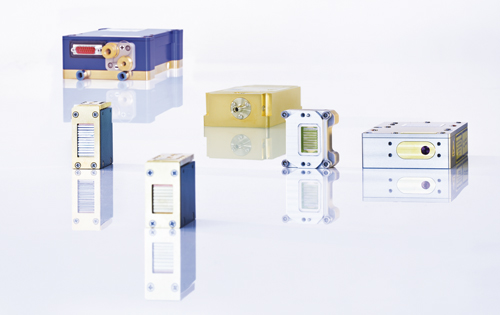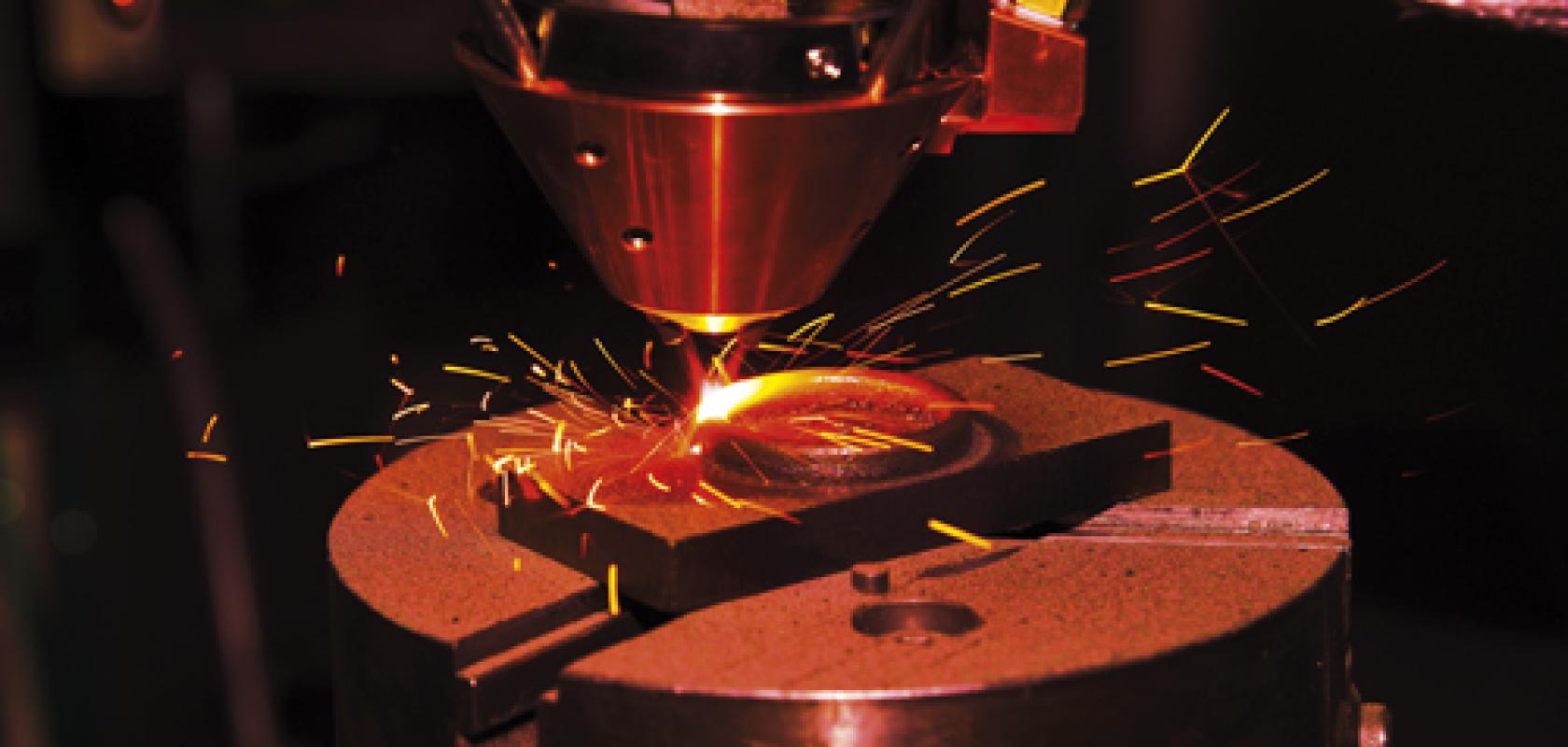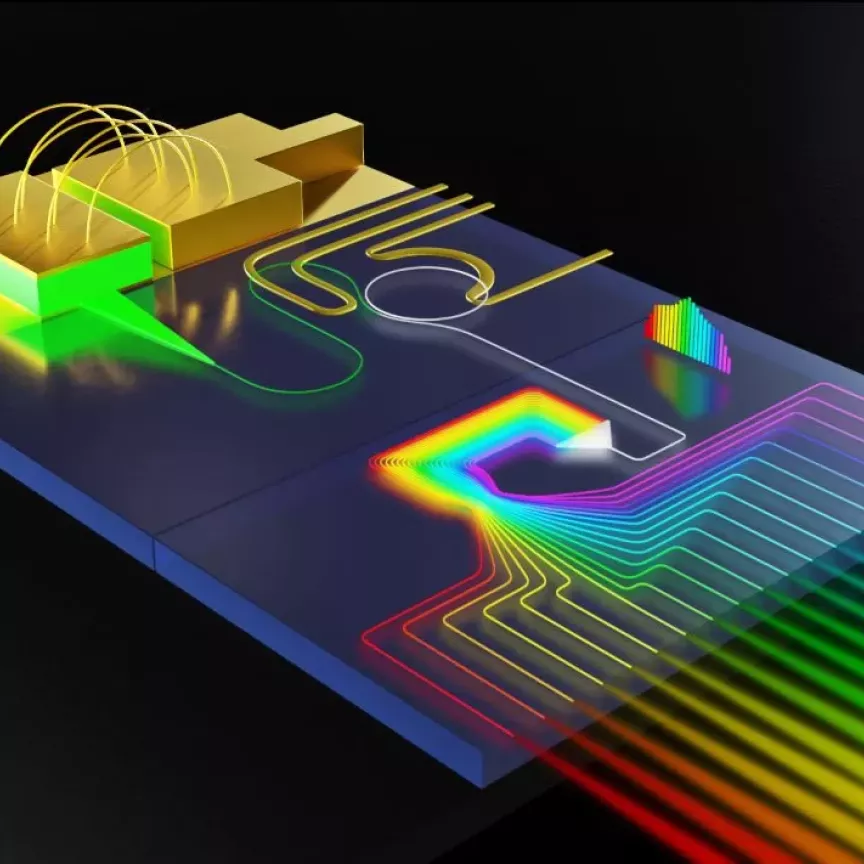Diode lasers currently hold a 25 per cent share of the global market for laser sources for materials processing – sources used in cutting, welding, marking, and additive manufacturing – while fibre lasers remain ahead with a 40 per cent share, according to a report published earlier in the year by Optech Consulting. CO2 and excimer sources account for 35 per cent of the market, which, according to the firm, grew 15 per cent last year to $1.3 billion.
Currently, the main materials processing applications for diode laser solutions are surface treatments such as cladding or welding, according to Dr Markus Röhner, director of sales in the Healthcare and Industry unit at Jenoptik, where diodes are ‘well established in the industry… for polymers, as well as for metals’. The main benefits of diode lasers are efficient energy conversion into laser power and low maintenance costs.
Diode lasers have traditionally been unfit for applications such as cutting, because high power diodes have generally been considered to have poor beam quality – at least compared to fibre lasers, which currently dominate laser cutting.
However, by improving beam quality while keeping down costs – which now seems more achievable than in the past – diodes could take a share of large materials processing markets like cutting and marking that have traditionally been held by CO2 and now fibre lasers.
‘With an increased brightness of laser diodes, more applications with direct diode systems such as cutting of metals will become a reality in the future,’ said Röhner. ‘With a further increase of brightness, marking applications are also imaginable.’
The main challenge associated with improving the quality of the laser beam – which includes parameters like brightness – is that putting too much effort into combining diode lasers – to increase power – while maintaining the highest possible beam quality will add cost, for example in the beam shaping optics. ‘It is important that the increased brightness will not result in increased costs, which would not be accepted by the market,’ said Röhner.
However, after heavy investment from diode laser manufacturers, in addition to achievements made by EU research projects, higher brightness systems – operating at kilowatt powers – are finding their way into the marketplace and beginning to compete with fibre lasers in terms of beam quality. ‘System designers made a huge progress in combining these high-brightness and high-power diodes to achieve efficient and complete high brightness systems,’ said Röhner.
Therefore, in the not-so-distant future, and if factors such as brightness and cost are properly addressed, ‘there is a high likelihood that diode lasers will dominate the material processing market,’ Röhner remarked.
Limited by cost
For lower brightness industrial applications, the diode laser is already the tool of choice, according to Dr Jens Biesenbach, technology director for the diode laser business unit at Coherent Dilas. Powder or wire-fed cladding is a large market for multi-kilowatt direct diode lasers, Biesenbach noted, and diode laser-based brazing in car body applications is in the ‘comfort zone’ of industrial usage. Hardening is growing slowly; however, a lack of market knowledge on the advantages of laser heat treatment – like the ability to use closed-loop control when hardening areas that are sensitive to overheating, like edges, corners and areas around holes – still limits its wider use as a substitute for induction hardening. On the other hand, the softening of hot pressed steel is gaining momentum, Biesenbach added.
The driver for the higher acceptance of diode lasers in industrial applications has been cost, Biesenbach explained. ‘Downward pressure on fibre laser costs forced the diode laser pump technology… to become more economical. Also, the scaling to higher volume production for fibre laser pumps, combined with production automation and high reliability chip development, made the diode laser more affordable,’ Biesenbach continued. ‘Paired with high efficiency, almost no maintenance, and compact size, the diode laser became an attractive tool.’
But for very high-power, high-brightness applications like metal cutting, currently, a fibre laser offers ‘unmatched beam quality’, Biesenbach said. ‘The fibre laser so far is always the “sharper tool”.’
Simply put, with increasing powers, it is much more complex and costly to maintain the beam quality of a diode laser compared to a fibre laser. ‘Today, the fibre laser, with its all-fibre architecture, is a more cost-effective beam improver for diode lasers than multiple, complex optical elements for wavelength stabilisation and the beam multiplexing of many hundreds of single 100µm cavities,’ Biesenbach said. This latter approach still cannot achieve the beam parameter product of a fibre laser at high powers, he added.
In the last few years, according to Biesenbach, the output power per 100µm emission of a single diode laser cavity increased beyond 10W – for this, multi-emitters are produced in a single monolithic bar. In addition, higher brightness – comparable to the beam quality of lamp-pumped solid-state lasers (20 mm x mrad) – has been achieved using Coherent Dilas’ tailored-bar (TBar) technology. In this way, 4kW output can be achieved with a diode laser. Biesenbach noted that, for welding applications, the results, in terms of speed and metal thickness, are comparable with a fibre laser.
Coherent Dilas’ TBar concept was developed during a 42-month EU project aimed at increasing the brilliance of direct diode laser systems, BRIDLE (Brilliant Industrial Diode Lasers), which concluded in 2016. The tailored bar diode laser concept allows the fabrication of a laser source that is high-brightness, scalable in power and economic to produce. According to Biesenbach, it combines the advantages of both the single emitter and bar-based diode lasers: reliability, high power per element, efficient cooling, compactness, and handling of several emitters in a monolithic chip at one time throughout production.
‘So, power and brightness are improving in parallel now, which shows we are on a good path to service more high brightness applications, which so far were only addressed by solid-state or fibre lasers,’ Biesenbach noted. However, he added that the complexity needs to be reduced by integrating, for example, wavelength stabilising technology on the chip or wafer level, which is required for collecting the output power of multiple emitters via dense wavelength multiplexing. ‘This complexity needs to be lower than using an active fibre as a beam enhancer for the diode laser, as it is typically done in a fibre laser,’ he said.

Jenoptik's high-power diode lasers for industry and medicine.
Cutting metal
Some diode systems are already being used for high-power industrial applications. One company, Teradiode, a MIT spin-off that’s now owned by Panasonic, is one company that’s already producing a high-brightness diode system for cutting metal.
It claims a beam parameter product of 3mm-mrad from a fibre-coupled direct diode laser with an output power of 2kW, equal to a brightness of 2,293MW/cm2–sr. The company also offers kilowatt-class direct diode lasers for metal processing with a brightness of 6,800MW/cm2–sr, which equals that of comparable fibre lasers, according to its website.
Japanese machine tool builder Mazak is one of the early adopters of Teradiode’s technology for sheet metal cutting. At Fabtech in Las Vegas last November, Mazak was demonstrating a direct diode machine – using Teradiode’s laser technology – side by side with a fibre laser.
In the demonstration, a 4kW Mazak direct diode system was able to cut 9mm stainless steel 44 per cent faster than a 4kW fibre laser. The same diode system-cut 1mm copper 50 per cent faster than the fibre laser. It was 10 per cent faster cutting 9mm mild steel, 18 per cent faster cutting 1mm aluminium and 14 per cent faster cutting 1mm stainless steel.
‘Across all material types and thicknesses up to 9mm, the 4kW direct diode laser was faster than a 4kW fibre laser,’ Rajiv Pandey, senior product line manager at Teradiode, told Laser Systems Europe last year.
Mazak adopting Teradiode’s systems is testament to direct diode lasers’ ability to cut sheet metal, but it’s still an incredibly young technology. ‘Right now, in my eyes, it’s still a little too early for high brightness direct diode technology for cutting,’ commented Biesenbach, in an article for Laser Systems Europe last year. Coherent director, Klaus Kleine, added in the same article: ‘Diode laser systems made for very high brightness applications less than 20mm-mrad look very complex to me.’
Kleine continued: ‘I believe that the best brightness converter is still the fibre laser. The fibre laser seems to be the more elegant solution for now. I expect that to change, but it will take time.’
‘Fibre lasers have a hold on the 2D cutting market,’ said Teradiode’s Pandey. ‘What we learned from our customers – machine builders – is that moving to a different technology, and even to a different power level, requires a lot of effort from their side – all the different cut parameters and recipes that they have to test. It’s a fairly big investment for machine builders and they have to do a lot of qualification work, building machines in the lab and testing prototypes. It’s probably a six months-to-a-year runway to adopt this technology.
‘If you look at the installed bases using direct diode lasers, it’s very small,’ he continued. ‘Diode reliability is at the heart of our whole system. We think reliability is good enough to be made at an industrial scale. After that it’s the type of application that really matters, as to where the technology fits in.’
Although, at the moment, fibre lasers are the more established technology for high-power, high-brightness industrial applications like cutting, it seems there is every possibility that diodes could take more of the share of the market.
When asked whether fibre lasers could ever take over from fibre lasers for metal cutting, Coherent Dilas’ Biesenbach said that, technically, this is possible – and has been demonstrated with their TBar technology – but, again, it comes down to cost. ‘We are not yet at a level where a diode laser concept can compete with fibre laser costs for metal cutting, which is by far the largest application for industrial lasers,’ he said.
As diode technology improves, however, Biensenbach pointed out that the costs for external wavelength stabilisation, beam shaping and multiplexing could be reduced.
In addition, the single emitter beam needs to have high fundamental mode quality – which, he said, new high-power designs can achieve – but that mode quality has to be stable enough for use in a production line.
‘The day these functional elements are integrated features of the diode laser chip, the diode laser has the potential to become the next workhorse in the industry after generations of CO2 and fibre lasers,’ Biensenbach commented. ‘Eventually, diode lasers could come to dominate metal cutting.
‘In my opinion, the most advanced diode lasers are those that can be produced using automated means at high yield and high quality,’ he continued, ‘and which are modular and scalable in power and flexible in beam quality and even wavelength. These diode lasers will be most accepted by the market – that is, utilising the specific diode laser chip output characteristics that differ from classic laser cavities that we know from CO2 and solid-state lasers.’


